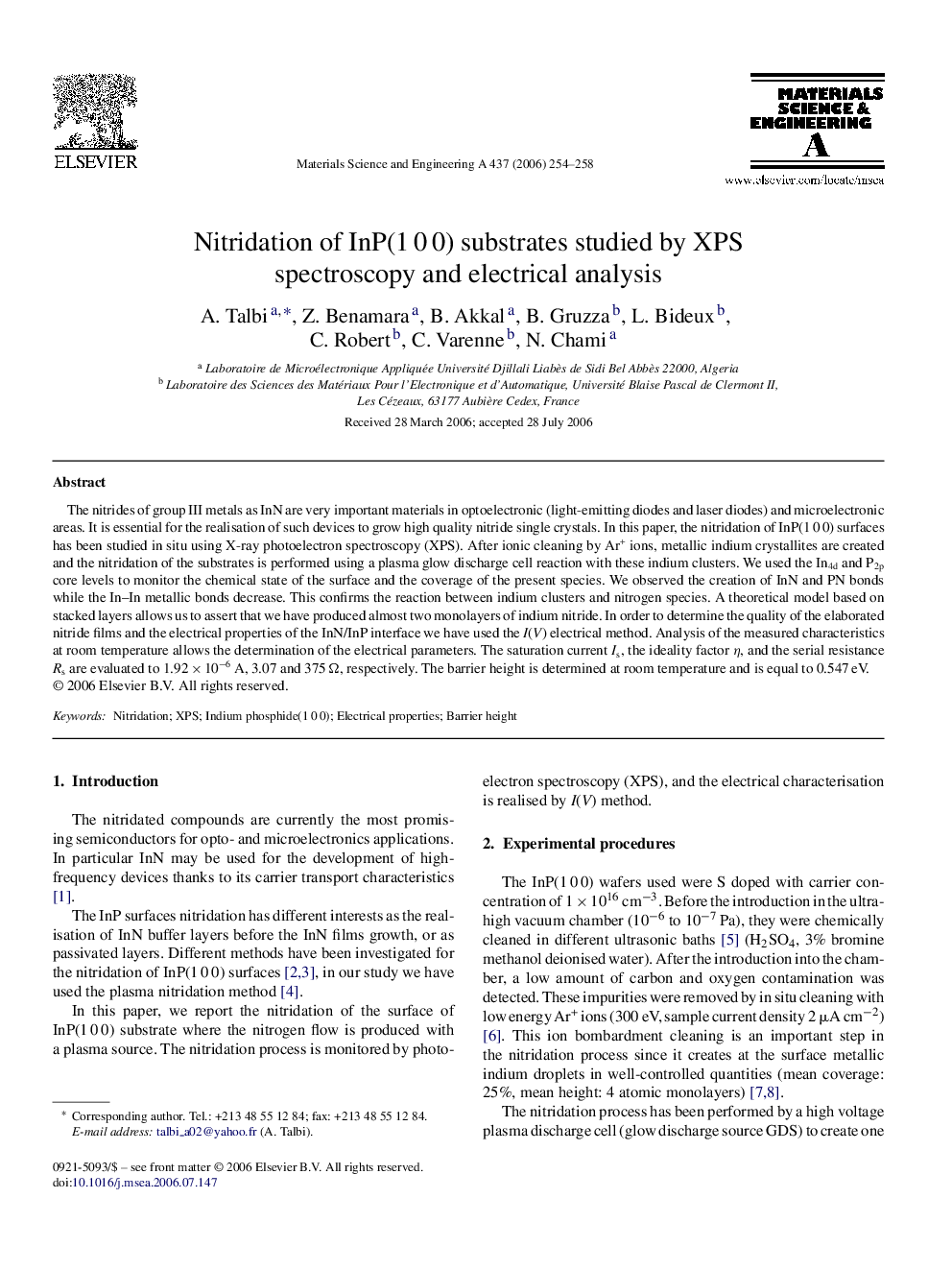| Article ID | Journal | Published Year | Pages | File Type |
|---|---|---|---|---|
| 1584850 | Materials Science and Engineering: A | 2006 | 5 Pages |
The nitrides of group III metals as InN are very important materials in optoelectronic (light-emitting diodes and laser diodes) and microelectronic areas. It is essential for the realisation of such devices to grow high quality nitride single crystals. In this paper, the nitridation of InP(1 0 0) surfaces has been studied in situ using X-ray photoelectron spectroscopy (XPS). After ionic cleaning by Ar+ ions, metallic indium crystallites are created and the nitridation of the substrates is performed using a plasma glow discharge cell reaction with these indium clusters. We used the In4d and P2p core levels to monitor the chemical state of the surface and the coverage of the present species. We observed the creation of InN and PN bonds while the In–In metallic bonds decrease. This confirms the reaction between indium clusters and nitrogen species. A theoretical model based on stacked layers allows us to assert that we have produced almost two monolayers of indium nitride. In order to determine the quality of the elaborated nitride films and the electrical properties of the InN/InP interface we have used the I(V) electrical method. Analysis of the measured characteristics at room temperature allows the determination of the electrical parameters. The saturation current Is, the ideality factor η, and the serial resistance Rs are evaluated to 1.92 × 10−6 A, 3.07 and 375 Ω, respectively. The barrier height is determined at room temperature and is equal to 0.547 eV.
